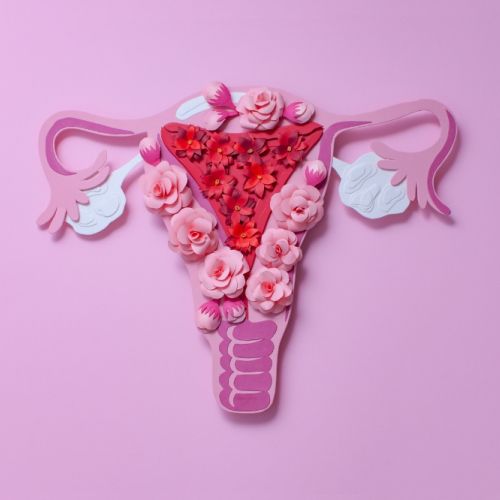I Want My Tubes Tied: What Are My Options?

Tubal ligation gives you nearly a 100% guarantee that you won’t get pregnant. It can be an attractive contraceptive option because it doesn’t alter your hormones or require anything on your part. There are no pills to take or devices to insert.
Tubal ligation is permanent and only recommended when a woman has decided her family is complete. At the California Center for Reproductive Health, our fertility specialists Eliran Mor, MD, and Irene Woo, MD, often treat women who have changed their minds after having tubal ligations and wish to have children.
While our team is experienced and talented when it comes to performing tubal reversals, some cases are easier than others. This is often due to the technique used for the original tubal ligation.
You may be certain now that you don’t want any more children, but circumstances can change. Here are your options when it comes to getting your tubes tied and what to consider when considering each option.
What is tubal ligation?
Tubal ligation is known as “getting your tubes tied” because it refers to blocking off the fallopian tubes, thin passageways that connect your ovaries to your uterus. An unfertilized egg travels through the fallopian tubes to meet up with a sperm. When the fallopian tubes are blocked or cut, the sperm and egg never meet.
What are the types of tubal ligation?
There are many ways in which to perform a tubal ligation. These are some of the most common:
Bipolar coagulation
This is the most popular way to perform a tubal ligation. It involves using an electrical current to seal off sections of the fallopian tube.
Tube damage only involves about 2-3 centimeters of the organ, so reversal is easier.
Irving procedure
This form of tubal ligation removes a segment of the fallopian tubes surrounded by two sutures. The ends of the fallopian tube connect back to the uterus and other connective tissue. Because two healthy fallopian tube sections remain intact, reversal is usually successful.
Monopolar coagulation
This form is less common than bipolar coagulation. It also uses an electrical current to seal the tubes together, but the current travels farther along the tube and causes more damage. As a result, reversal of this method is usually more difficult to achieve.
Tubal clips and rings
This form of tubal ligation uses a clip or ring to seal off the fallopian tube. These methods have a high success rate when it comes to reversal and are considered safe and effective when the goal is to prevent pregnancy.
Pomeroy tubal ligation
During a Pomeroy tubal ligation, part of your fallopian tube is cut off and strangled with a suture. The affected part is then cut and burned to prevent a pathway for an egg’s travel. This form of tubal ligation can usually be reversed.
Deciding to have your tubes tied is a serious decision. While our team at California Center for Reproductive Health is skilled at reversing the procedure, it’s not always easy.
If you have questions about tubal ligation and its effects on your long-term fertility, call one of our offices in Encino, Valencia, Alhambra, or West Hollywood, California, to set up an appointment. Alternatively, reach out via this website.
Eliran Mor, MD
Reproductive Endocrinologist located in Encino, Valencia & West Hollywood, CA
FAQ
What does a reproductive endocrinologist and infertility specialist do?
Reproductive endocrinology and Infertility is a sub-specialty of Obstetrics and Gynecology. In addition to managing medical and surgical treatment of disorders of the female reproductive tract, reproductive endocrinologist and infertility (REI) specialists undergo additional years of training to provide fertility treatments using assisted reproductive technology (ART) such as in vitro fertilization.
Reproductive endocrinologists receive board certification by the American Board of Obstetrics and Gynecology in both Obstetrics and Gynecology and Reproductive Endocrinology and Infertility.
When should I see an REI specialist?
In general, patients should consider consulting with an REI specialist after one year of trying unsuccessfully to achieve pregnancy. The chance of conceiving every month is around 20%, therefore after a full year of trying approximately 15% of couples will still not have achieved a pregnancy.
However, if a woman is over the age of 35 it would be reasonable to see a fertility specialist earlier, typically after 6 months of trying.
Other candidates to seek earlier treatment are women who have irregular menses, endometriosis, fibroids, polycystic ovary syndrome (PCOS), women who have had 2 or more miscarriages, or problems with the fallopian tubes (prior ectopic pregnancy).
What are the reasons we are having trouble conceiving?
Approximately 1/3 of the time cause for infertility is a female factor, 1/3 of the time a male factor, and the remaining 1/3 a couples’ factor.
At CCRH, we emphasize the importance of establishing a correct diagnosis. Both partners undergo a comprehensive evaluation including a medical history and physical exam.
Furthremore, the woman’s ovarian reserve is assessed with a pelvic ultrasound and a hormonal profile. A hysterosalpingogram (HSG) will confirm fallopian tube patency and the uterine cavity is free of intracavitary lesions. A semen analysis is also obtained to evaluate for concentration, motility, and morphology of the sperm.
Additional work up is then individualized to direct the best possible treatment option for each couple.
What is IVF? What is the process like?
In vitro fertilization (IVF) is the process that involves fertilization of an egg outside of a woman’s body.
The process starts with fertility drugs prescribed to help stimulate egg development. In your natural cycle, your body is only able to grow one dominant egg, but with stimulation medication we can recruit multiple eggs to continue to grow. After about 8-10 days of stimulation, the eggs are surgically retrieved and then fertilized with sperm in a specialized laboratory. Fertilized eggs are then cultured under a strictly controlled environment within specialized incubators in the IVF laboratory for 3-5 days while they develop as embryos. Finally, embryos (or an embryo) are transferred into the uterine cavity for implantation.
Should I have IVF?
Before deciding if IVF is the right choice, it’s important to sit down with an REI specialist to discuss available treatment options. For some people, other methods such as fertility drugs, intrauterine insemination (IUI) may be the best first choice treatment. At CCRH, we believe each individual couple is unique and not everyone needs IVF.
Is the IVF procedure painful?
While not painful, the fertility medications may some side effects including headaches, hot flashes, mood swings, and bloating. The injection sites may also bruise.
Will IVF guarantee a baby?
Unfortunately, no. Many people think once they start IVF it’s a matter of time that they will be pregnant and have a baby. But according to national statistics per the Society of Assisted Reproduction (SART), on average 40% of assisted reproduction cycles achieve live births in women under age 35. The chances of success then continue to decrease with advancing age.
At CCRH, we employ only evidence-based interventions to ensure patient safety and optimal outcome. While we cannot guarantee a baby, we guarantee that you will receive the best, most advanced, personalized care to help you maximize your chance of a baby.
What is the success rate for IVF?
The average IVF success rate (success measured in live birth rate) using one’s own eggs begins to drop around age 35 and then rapidly after age 40. This is due to the decline in egg quantity and egg quality as a woman ages.
Our clinic’s success rate consistently beats the national average year after year.
Do insurance plans cover infertility treatment? How much does IVF cost?
Individual insurance plans often do not have any coverage for infertility treatments. If you have a group plan, you can call members services to see if they have coverage for infertility (including consultation/workup and IVF).
After your consultation with our REI specialist, one of our dedicated account managers with sit with you to go over the cost of treatment.




